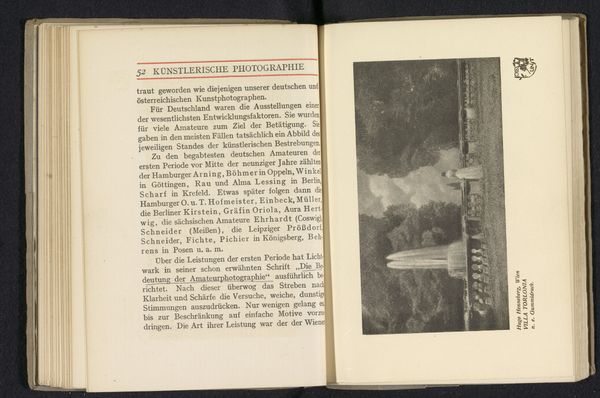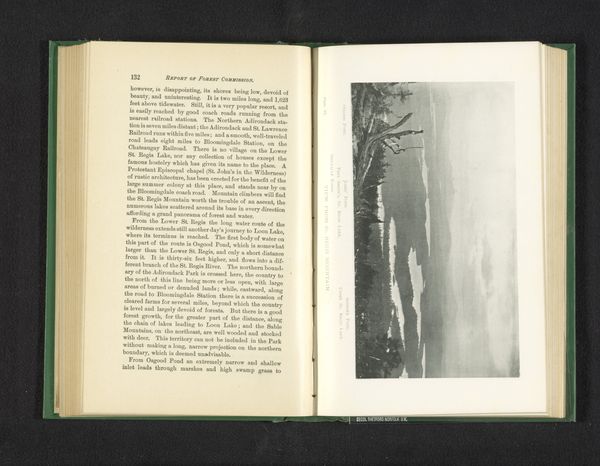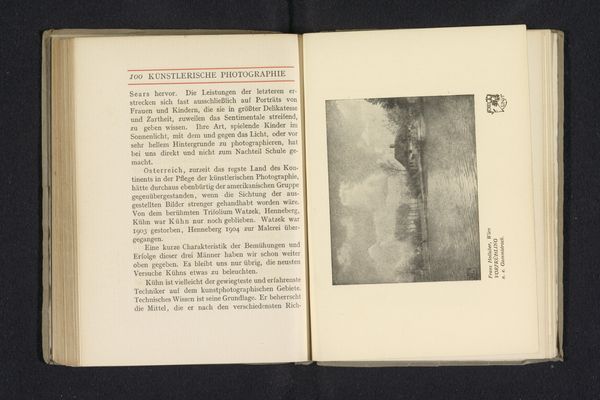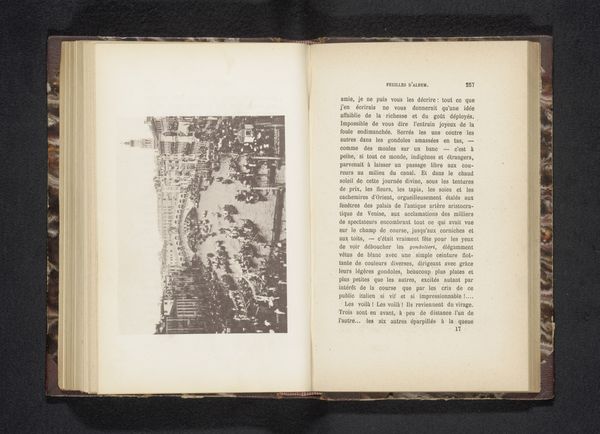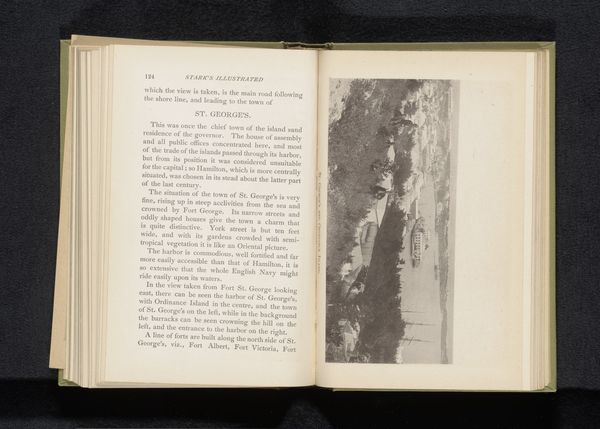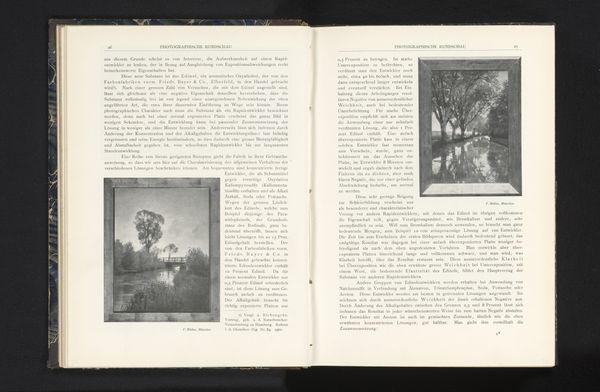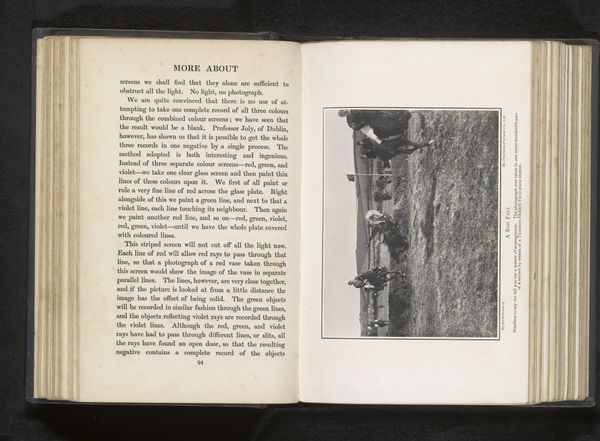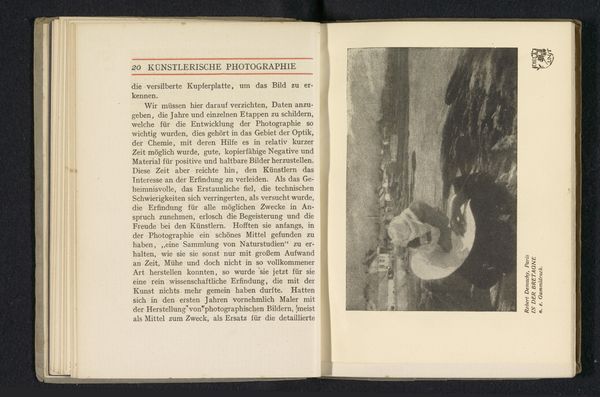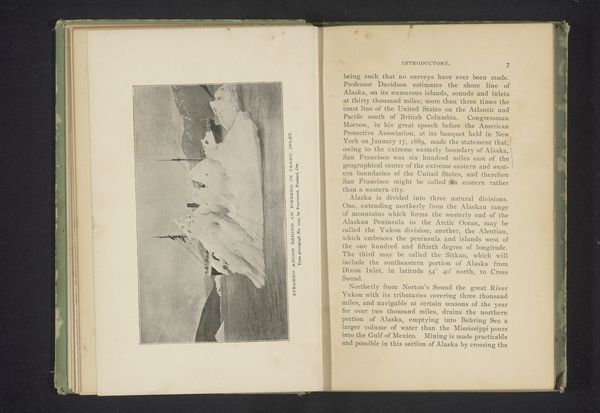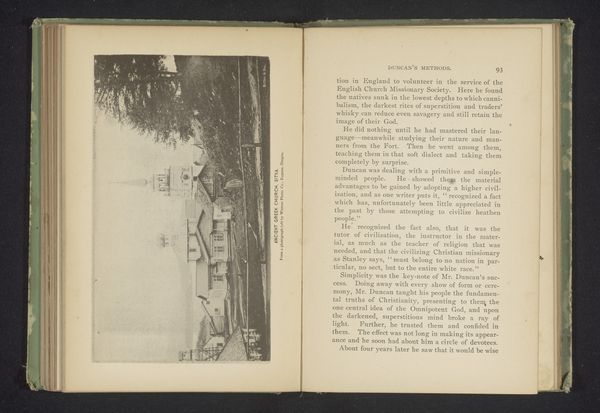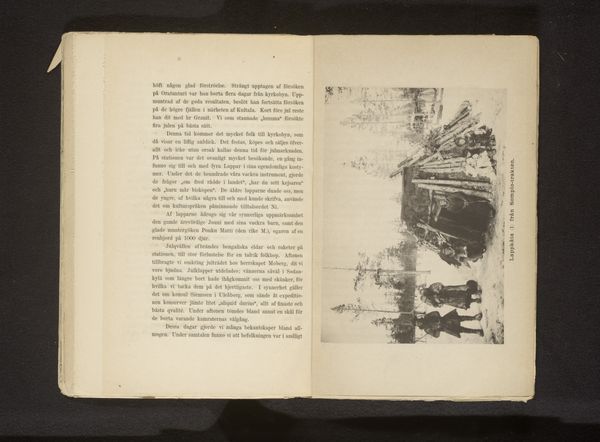
Fotoreproductie van een foto door Otto Ehrhardt, voorstellend een landschap met huizen before 1907
0:00
0:00
print, photography
#
aged paper
#
paper non-digital material
#
paperlike
# print
#
sketch book
#
landscape
#
personal journal design
#
german-expressionism
#
photography
#
personal sketchbook
#
journal
#
handwritten font
#
historical font
#
columned text
Dimensions: height 70 mm, width 120 mm
Copyright: Rijks Museum: Open Domain
Curator: So, what we have here is a reproduction of a photograph by Otto Ehrhardt, of a landscape featuring houses; we believe this image predates 1907. Editor: It has such a wistful quality, doesn’t it? Like looking at a faded memory, the blurry outlines of the houses, the tall spindly trees... Curator: It’s presented within the pages of what appears to be an aged journal, next to a column of handwritten text, making this photo even more personal, wouldn't you agree? The photo becomes intertwined with textual interpretation. Editor: Yes, but let’s talk about that reproduction. It's not just a straightforward presentation; it is deliberately constructed and curated within the book itself. I am immediately thinking about the labor involved: the paper making, photographic processing, printing, binding... each material with its own story of human inputs and resource extraction. Curator: Indeed! There’s something charming about seeing photography—which we often think of as striving for objectivity—framed by these more subjective elements like handwritten annotations in aged paper. It reminds us that even photography is filtered through a lens. Editor: Absolutely, and how was it distributed, and to whom? What was the relationship between photography, art and publishing? All these factors shape our experience of the image today. You mentioned the printing. It appears this image, on aged paper stock, seems of lesser production quality relative to other images that could have been selected for this photography journal, yes? Curator: Interesting! Perhaps the constraint wasn’t about a higher standard, but it was deliberately chosen for artistic reasons to highlight Ehrhardt's landscapes to blend perfectly into this compilation. Or, could that simply be due to constraints with material availability at the time? I mean, paper was not just paper—it's also fibers, processes and skills. Editor: Exactly, understanding the processes makes us realize how enmeshed aesthetics are within broader social, economic, and technical systems. Ehrhardt’s landscape transcends time and has become inextricably linked to the processes that enabled this moment. Curator: A potent reminder. I leave with a deep sense of quiet appreciation for the intersection of nature and craftsmanship within this single page. Editor: Agreed, an object where artistic expression is deeply rooted within complex webs of making.
Comments
No comments
Be the first to comment and join the conversation on the ultimate creative platform.
